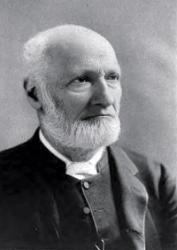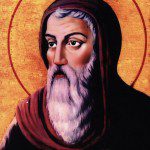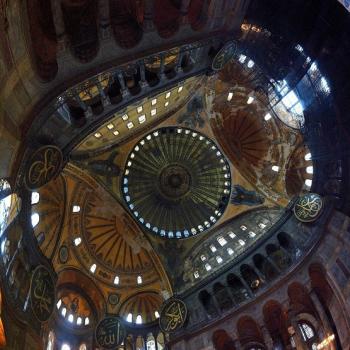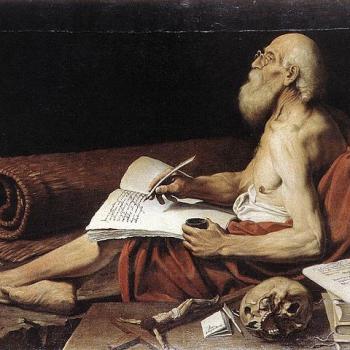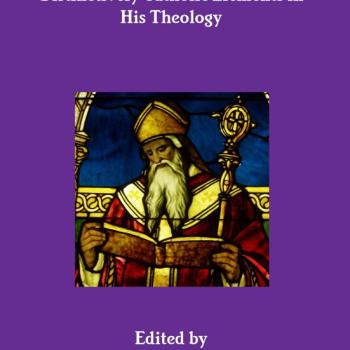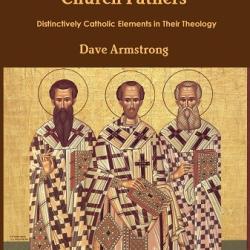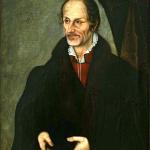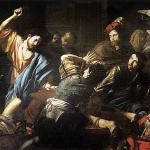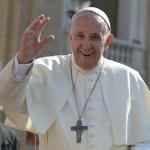Philip Schaff (1819-1893): fair-minded and objective Protestant Church historian (photo, c. 1880) [public domain / Wikipedia]
* * *
Here is a chapter which wasn’t included in my 2007 book, The One-Minute Apologist (probably because it had too many lists). I still think it is a handy little reference guide for this topic, which comes up often. Certainly I can at least share it here rather than waste all the work I did on it!
Many Catholic doctrines were only introduced centuries later and were corruptions
In fact, the exact opposite is true: the fathers as a whole were much more “Catholic” in their beliefs than they were some kind of primitive “Protestants”, and this is amply confirmed by Protestant Church historians themselves.
Ten major “distinctively Catholic” doctrines will be supported by documentation (that early Church fathers largely agreed) from the Protestant historians listed below:
Bible, Church, and Tradition, not Bible Alone (sola Scriptura) as the rule of faith (Oberman, 366-367; Pelikan, 115-119, 303-304; Schaff, II: 169-72, 525-28).
Organic connection of justification and sanctification, not Faith Alone (sola fide) (Geisler, 85, 89, 91-93, 99, 222, 502; McGrath, 108-109, 115; Schaff, II: 588-589).
Mary was a perpetual virgin, the Second Eve, and Mother of God (Theotokos) (Cross, 882-83; Kelly, 491-99; Schaff, III: 409-425, 716-22)
The papacy had strong, binding authority (Kelly, 417-21; Pelikan, 352-354; Schaff, II: 155-162, III: 299-319).
Real presence (not mere symbolism) in the Eucharist (Cross, 475-76; Kelly, 447; Pelikan, 166-67, 236-37; Schaff, III: 492, 500).
The sacrifice of the mass (Cross, 476, 1221; Pelikan, 146-47, 170; Schaff, III: 500).
Episcopacy, or the rule of bishops (Cross, 176; Pelikan, 159-160; Schaff, II: 133-39).
Purgatory and prayers for the dead (Cross, 1144-45; Schaff, II: 603-606).
Baptismal regeneration (forgiveness of sins) (Kelly, 207-211; Pelikan, 290-92; Schaff, II: 253-54).
The veneration and intercession of the saints (Cross, 1227-28; Kelly, 490-91; Schaff, III: 428-42)
SOURCES
F. L. Cross and E. A. Livingstone, editors, The Oxford Dictionary of the Christian Church, Oxford Univ. Press, 2nd edition, 1983.
Norman L. Geisler and Ralph E. MacKenzie, Roman Catholics and Evangelicals: Agreements and Differences, with Grand Rapids, Michigan: Baker Book House, 1995, 502, 85, 89, 91-93, 99, 222
J. N. D. Kelly, Early Christian Doctrines, San Francisco: Harper & Row, 1978 edition.
Alister McGrath, Reformation Thought: An Introduction, 2nd edition, Grand Rapids, Michigan: Baker Book House, 1993.
Heiko Oberman, The Harvest of Medieval Theology, Grand Rapids, Michigan: Eerdmans, 1967 edition.
Jaroslav Pelikan, The Christian Tradition: A History of the Development of Doctrine: Vol. I: The Emergence of the Catholic Tradition (100-600), Chicago: Univ. of Chicago Press, 1971.
Philip Schaff, History of the Christian Church, Vol. II: Ante-Nicene Christianity: A.D. 100-325, Grand Rapids, Michigan: Eerdmans, 1970; from the 5th revised edition of 1910.
Philip Schaff, History of the Christian Church, Vol. III: Nicene and Post-Nicene Christianity: A.D. 311-600, Grand Rapids, Michigan: Eerdmans, 1974; from the 5th revised edition of 1910.
Objection
But individual church fathers can certainly be mistaken. Catholics refer to a “unanimous consent” which is not true to history, because you can always find exceptions among Church fathers.
The Catholic Church understands and recognizes this. The phrase “unanimous consent” does not mean “literally everyone,” but rather, “substantial, overwhelming agreement and consensus,” such as was found, for example, with regard to the biblical canon (an example Protestants are fairly familiar with). This can be proven with historical facts, as above. Oftentimes, modern usages of a word differ from medieval usage, based on the original Latin definitions, so that some wrongly believe a contradiction is present.
J. N. D. Kelly and Philip Schaff (Protestant historians):
Throughout the whole period Scripture and tradition ranked as complementary authorities, media different in form but coincident in content. To inquire which counted as superior or more ultimate is to pose the question in misleading terms. If Scripture was abundantly sufficient in principle, tradition was recognized as the surest clue to its interpretation, for in tradition the Church retained, as a legacy from the apostles which was embedded in all the organs of her institutional life, an unerring grasp of the real purport and meaning of the revelation to which Scripture and tradition alike bore witness.
(Early Christian Doctrines, San Francisco: Harper & Row, 1978 edition, 47-48; referring to the third century)
If any one expects to find in this period [100-325], or in any of the church fathers, Augustin himself not excepted, the Protestant doctrine of justification by faith alone, . . . he will be greatly disappointed . . . Paul’s doctrine of justification, except perhaps in Clement of Rome, who joins it with the doctrine of James, is left very much out of view, and awaits the age of the Reformation to be more thoroughly established and understood.
(History of the Christian Church, Vol. II: A.D. 100-325, 588-589)


